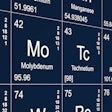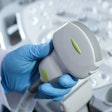The U.S. Food and Drug Administration (FDA) has issued final guidance to provide the medical device industry clarity on the definition of "remanufacturing" for reusable devices needing maintenance or repair.
The final guidance seeks to ensure consistency regarding what constitutes remanufacturing activities and to promote a better understanding of applicable federal law and regulations implicated by remanufacturing activities. It was issued following the agency's review of postmarket information and consideration of public comments. These highlighted the need for clarity, considering the different regulatory implications between "servicing" and "remanufacturing" of a medical device, the FDA noted.
Remanufacturing is when a significant alteration is made to a device's performance, safety specifications or its intended use, changing the device from what was legally marketed as approved, cleared or authorized by the FDA, the administration said in its statement.
One imaging example the FDA used in its final guidance was replacing a damaged gradient coil in an MR system. Questions to be answered for final guidance include the following: whether parts or materials being added, removed, or changed are those that directly or indirectly contact body tissue; whether adding or removing parts will change the dimensional or performance specifications of a part; and whether there is a significant change to device performance or safety specifications?
Additionally, the guidance recommends certain information be included in the labeling of reusable medical devices regarding their preventive maintenance and repair. This includes instructions on how to adequately return a device to its performance and safety specifications established by the original equipment manufacturer. The labeling recommendations do not encourage the disclosure of trade secrets or confidential commercial information.
The full guidance can be found here.


















